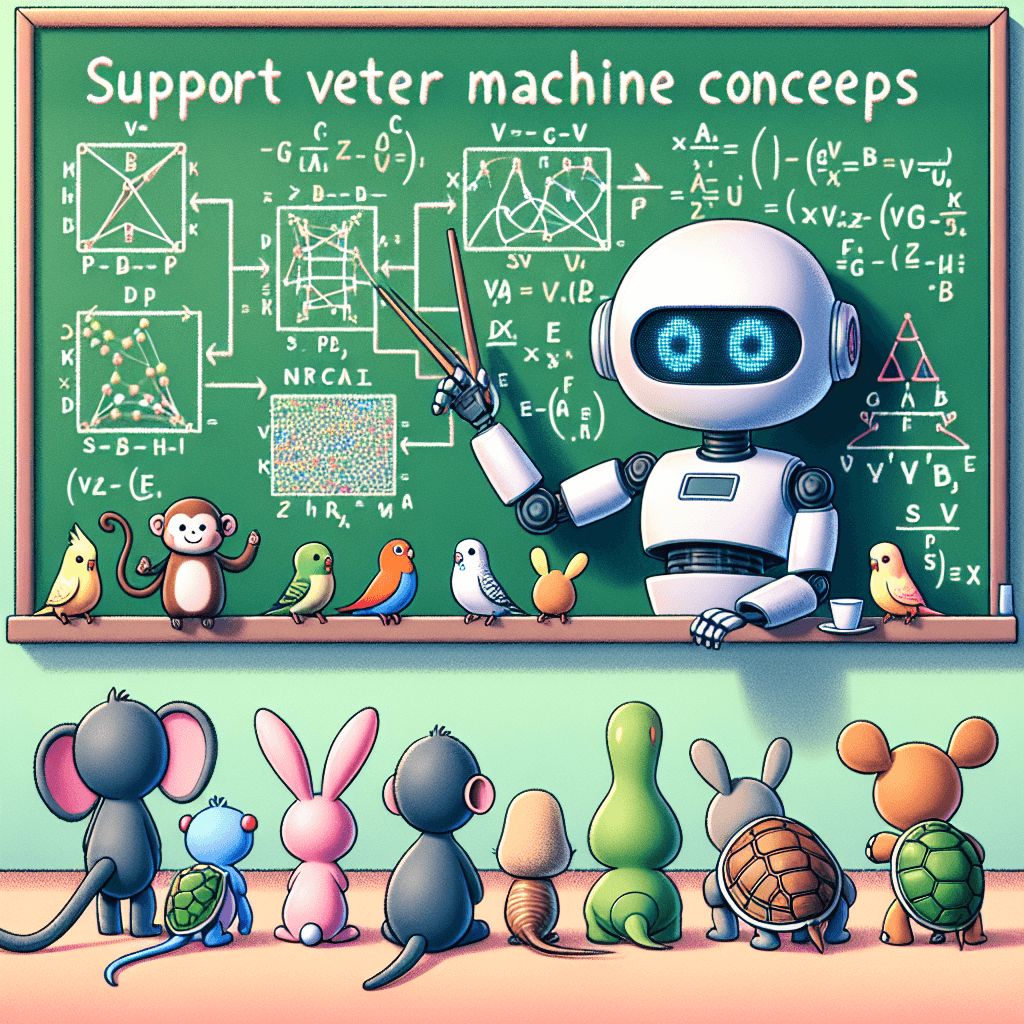Imagine you are at a fruit market trying to sort apples from oranges. You place the fruits on a table and start arranging them such that all apples are on one side and all oranges on the other. The challenge now is to draw a line that best separates the two kinds of fruit. This is very similar to what a Support Vector Machine (SVM) does in the world of data science – it finds the optimal boundary, or ‘hyperplane’, that distinctly classifies data points into separate categories.
What are Support Vector Machines?
Support Vector Machines are a set of supervised learning methods used for classification, regression, and outliers detection. The SVM algorithm tries to find the best margin (distance between the line and the nearest data point from each class) which maximizes the distance between data points of different classes. In essence, the wider the margin, the lower the error of the classifier.
Support Vector Machines are very strong for a small or medium-sized dataset of features with a clear margin of separation and are particularly useful for binary classification. They are similar to advanced methods for drawing lines of separation which, unlike KNN, do not require you to store the entire dataset.
Common Uses for SVM
Support Vector Machines’ ability to work with non-linear boundaries makes them quite versatile. Here are a few areas where they excel:
- Face Detection: SVMs classify parts of the image as a face and non-face and create a boundary around the face.
- Text and Hypertext Categorization: SVMs help in categorization of text and are useful in detecting spam and topic categorization.
- Classification of Images: They can classify images with high accuracy after being trained using various kernels.
- Bioinformatics: Includes protein classification and cancer classification, where the application of SVM leads to more accurate detection of the future likelihood of diseases.
How does SVM work: A step-by-step guide
Understanding how SVM operates involves a few key steps:
- Training Data: SVM takes in training data that is already labeled.
- Finding the Hyperplane: The algorithm tries to find the best hyperplane that separates the data into classes.
- Support Vectors: Among all the data points, SVM identifies the support vectors that help in creating the optimal separating hyperplane.
- Classification with Maximum Margin: The algorithm creates a margin between data points of different classes, aiming to enhance the classifier’s accuracy.
- Using Kernels for Non-linear Data: When the data is not linearly separable, SVM can use kernels, such as polynomial or radial basis function (RBF) to map data to a higher dimension where it is separable.
Libraries for implementing SVM
To implement an SVM, data scientists typically turn to:
- Scikit-Learn in Python – Provides a variety of SVM models with different kernels.
- Libsvm – An integrated software for support vector classification, among others.
- e1071 in R – A package that contains functions for SVM models.
Related Algorithms
SVM is a powerful tool on its own, but it also relates to several other algorithms like:
- Logistic Regression when used for binary classification problems.
- Naive Bayes which also handles classification with an entirely different approach.
Pros and Cons of SVM
Support Vector Machines have their highs and lows. Let’s look at some:
Pros:
- Effective in high-dimensional spaces.
- Still effective when the number of dimensions exceeds the number of samples.
- Memory efficient as it uses a subset of training points (support vectors).
- Works well with a clear margin of separation and is versatile with different Kernel functions.
Cons:
- If the number of features is much greater than the number of samples, it may result in poor performance.
- SVMs do not perform very well with large datasets because the training time happens to be cubic in the size of the dataset.
- They require careful tuning of the model parameters and a good knowledge of how the kernels behave.
- Not suitable for multi-class tasks on their own—extensions like one-vs-all need to be used.
